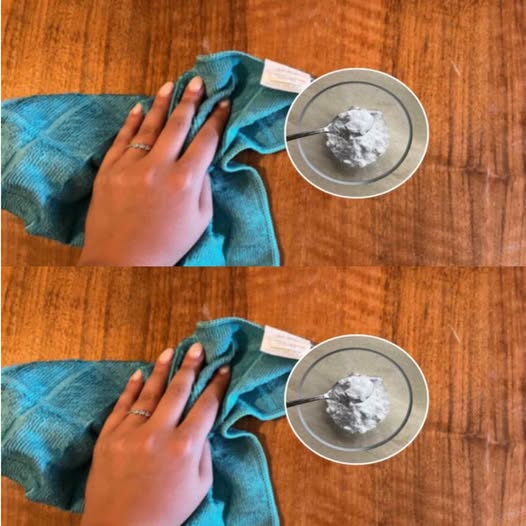ADVERTISEMENT
How to Quickly and Easily Remove All Grease from Kitchen Cabinets
If you’ve been cooking up a storm, you might notice that your kitchen cabinets are starting to look a little worse for wear, especially around the stovetop. Over time, grease and cooking residue accumulate on the surfaces, making your kitchen look dull and dirty. But don’t worry – cleaning your kitchen cabinets doesn’t have to be a daunting task. With a few simple steps and easy-to-find ingredients, you can quickly and effectively remove all grease from your kitchen cabinets, bringing them back to life!
Let’s dive into how you can get your kitchen cabinets sparkling clean and grease-free with minimal effort.
Why Grease Builds Up on Kitchen Cabinets:
Grease can accumulate on kitchen cabinets from everyday cooking activities. Frying, sautéing, or even just simmering can cause grease particles to float in the air, settle on your cabinets, and create a sticky layer over time. This layer not only makes your cabinets look dirty but can also attract dust and grime, further complicating your cleaning process.
But don’t worry – this build-up is entirely manageable with the right cleaning techniques!
What You’ll Need:
The great news is that you don’t need any fancy cleaning products to tackle this mess. Many common household items can do the job just as well. Here’s what you’ll need:
- Dish Soap (preferably a degreasing variety)
Dish soap is perfect for cutting through grease and grime. - Baking Soda
A natural abrasive that helps lift stubborn grease stains. - White Vinegar
White vinegar is excellent for breaking down grease, and it also acts as a deodorizer. - Warm Water
To mix with your ingredients and help dissolve grease. - Microfiber Cloths or Sponges
For wiping down the surfaces without causing damage. - Spray Bottle (optional)
To apply your cleaning mixture more evenly.
How to Remove Grease from Kitchen Cabinets Step-by-Step:
Step 1: Clear the Area
Before you start cleaning, remove any items from your cabinets, like dishes, food, and utensils. This will give you a clear working space and make it easier to clean all surfaces.
Step 2: Make Your Cleaning Solution
There are several methods to clean your cabinets, but here are two options based on what you have available:
Option 1: Dish Soap and Warm Water Solution
- Fill a bowl with warm water.
- Add a few squirts of degreasing dish soap to the water.
- Stir the solution to create a soapy mixture.
Option 2: Baking Soda and Vinegar Solution
- Mix 2 tablespoons of baking soda in a cup of warm water.
- Add a tablespoon of white vinegar to the mixture and stir well. The vinegar will react with the baking soda, helping lift grease stains.
Step 3: Apply the Solution
Use a microfiber cloth or sponge to dip into the cleaning solution. Wring out the excess liquid so it’s damp but not dripping. Start wiping down your cabinets in small sections. For greasy spots, apply a little extra pressure or dip your cloth into the solution again.
Tip: If your cabinets have heavy grease build-up, you can apply a bit of the baking soda and vinegar paste directly to the grease spot. Let it sit for 5-10 minutes before scrubbing.
Step 4: Scrub and Lift Grease
For stubborn grease, use a non-abrasive sponge to gently scrub in circular motions. The baking soda paste acts as a mild abrasive that will help lift the grease without damaging the finish of your cabinets.
If you’re using the dish soap solution, simply wipe away the grease, and the soap will cut through the residue. If you’re tackling a lot of grease, you may need to repeat the process a couple of times.
Step 5: Rinse and Dry
Once you’ve scrubbed away the grease, dampen a clean cloth with plain warm water and wipe down the cabinet surfaces to remove any soap or vineg
